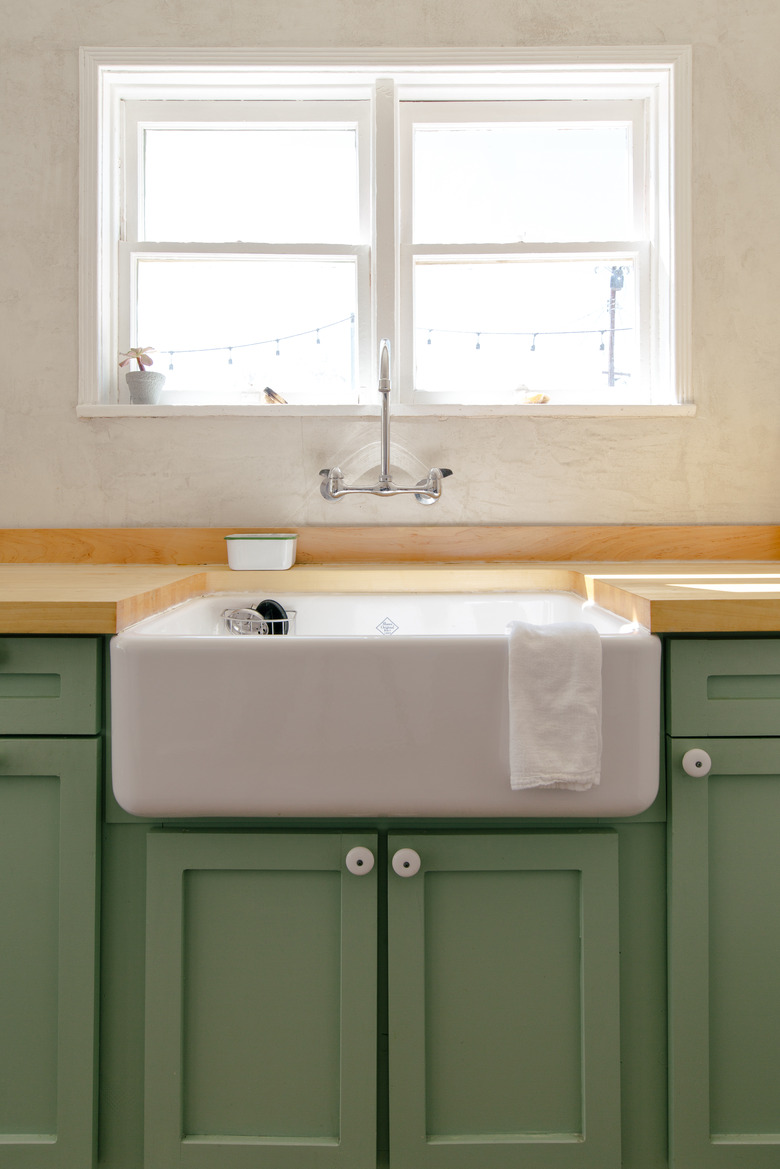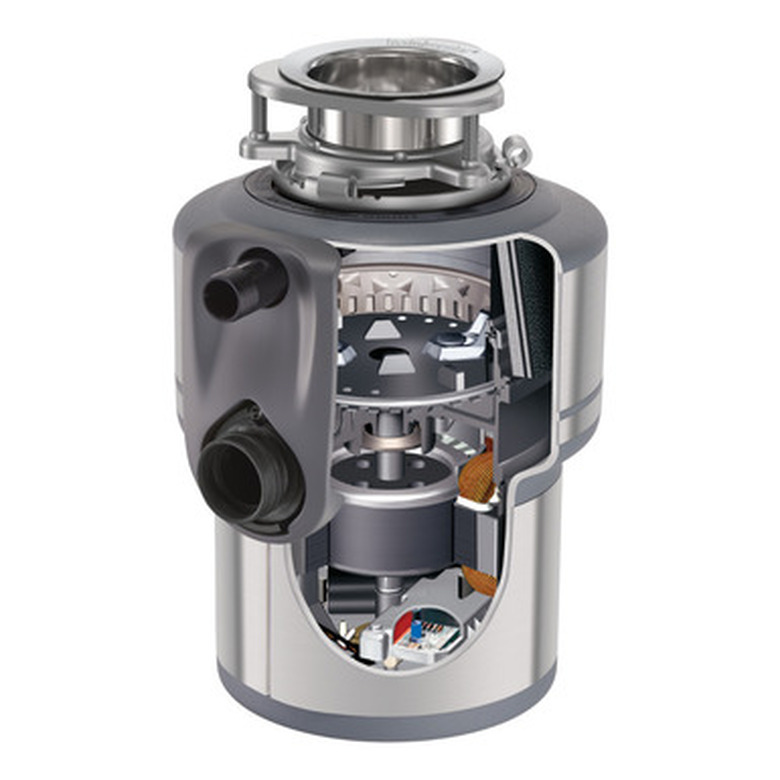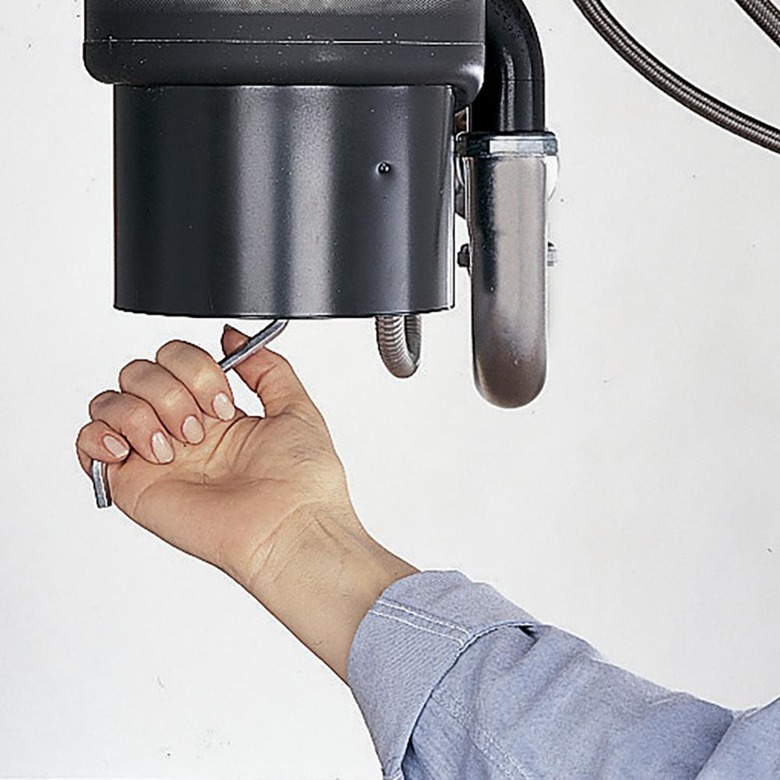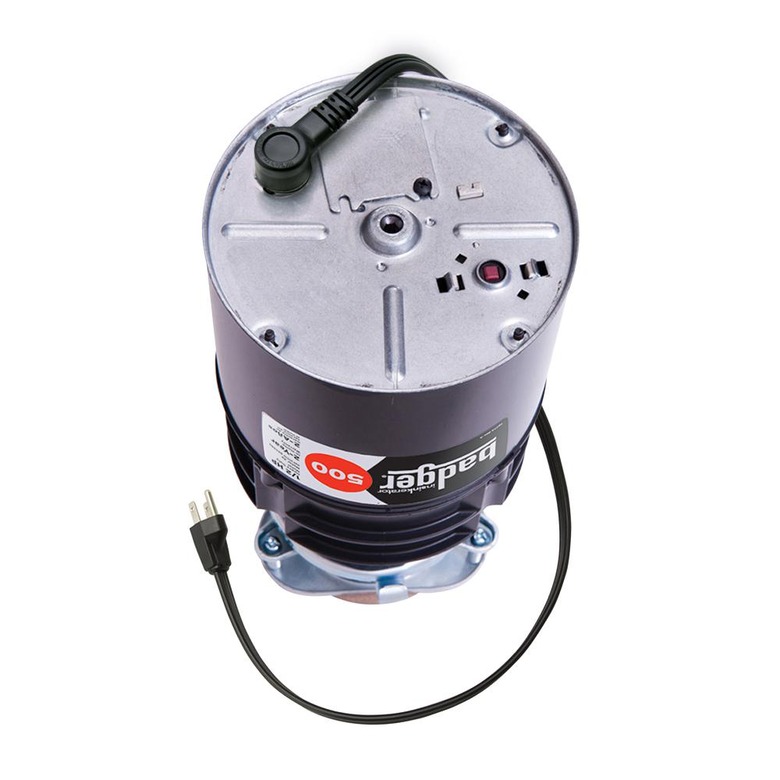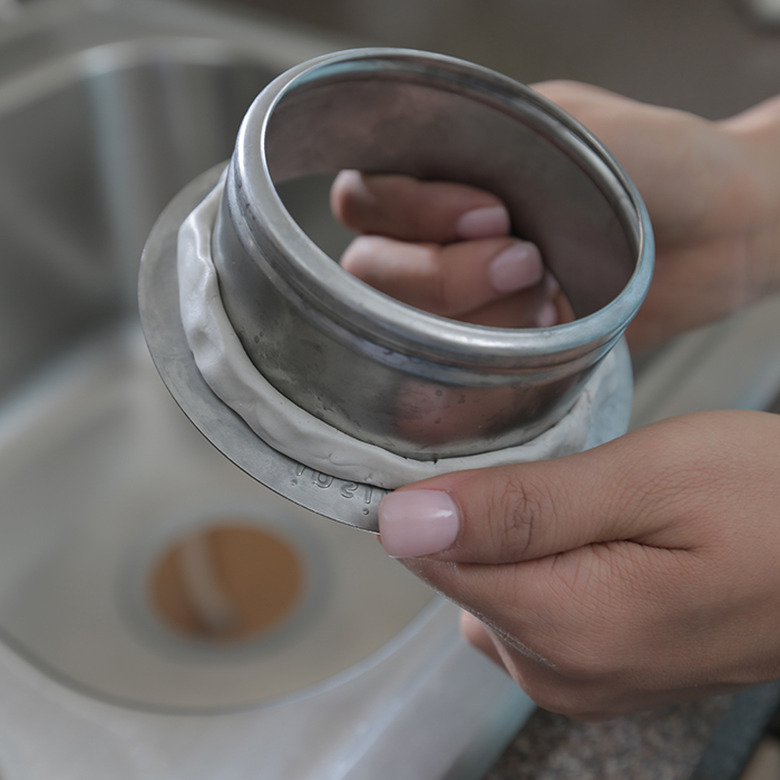How To Fix A Garbage Disposal
We may receive a commission on purchases made from links.
For some reason, garbage disposals are the subject of more misconceptions and misinformation than most other items in the house. To dispel just a few of the common myths about these ubiquitous appliances, garbage disposals don't have sharp teeth or blades, and nothing inside the disposal is made sharper by grinding up ice cubes in it. Also, they aren't really cleaned with lemon peels—or baking soda or vinegar or ice. And you can indeed unjam a disposal with a broom handle (an old-fashioned method), but there's a much better way. Finally, despite their mysterious inner workings, garbage disposals are quite easy to replace, so if you have at least a bit of DIY pluck, you probably don't need to hire a plumber for the job.
How Garbage Disposals Work
How Garbage Disposals Work
Inside the dark, slimy depths of your garbage disposal is a metal chamber with a circular spinning plate that contains two swiveling metal lugs called impellers. These are the "teeth" that most people imagine (but, again: not sharp). The chamber wall surrounding the plate has lots of holes with raised edges, sort of like a very dull cheese grater. When you dump food into the disposal and turn on the switch, the impeller plate spins, creating significant centrifugal force that, along with the impellers, pulverizes the food against the grinding ring (which doesn't move). When the food particles are small enough, they get washed through the holes in the grinding ring and down into the sink drain. The water is necessary to flush the food down the drain, so it's important to always run water when using a disposal.
Garbage Disposal Jammed or Dead
Garbage Disposal Jammed or Dead
Disposals can grind up almost any food, but sometimes they meet their match in small, hard objects like cherry pits, nut shells and gravel. Usually, something gets stuck in the small gap between the impeller plate and the grinding ring. When a disposal jams, the impeller plate locks up and the motor hums or it shuts itself off. If you hear it humming, turn off the disposal's switch right away to prevent undo damage to the motor. If there is no humming, chances are the motor's overload breaker has tripped to prevent motor damage.
To fix a jammed disposal, turn off the switch so there's no power going to the disposal. As an added precaution, you can also shut off the breaker to the disposal's circuit in your home's breaker box, if desired. Reach into the disposal with your hand and feel around for the jammed object and pull it out. Alternatively, you can shine a flashlight into the disposal and fish out the obstruction with needlenose pliers (you'll have to grab blindly with the pliers because your hand will block your view).
If you can't find an obstruction, try to move the impeller plate manually: Locate the funny little wrench (sometimes called a wrenchette) that comes with most disposals and should be in a plastic sleeve under the sink or stuck to the side of the disposal. Stick the end of the wrench into the recessed nut in the bottom center of the disposal, then crank it back and forth to free the impeller. If you don't have a wrenchette, find an Allen wrench that fits the nut; 1/4-inch is typical.
Locate the small motor reset button, usually on the bottom of the disposal unit, and press it in. Run the water, then turn on the disposal at the switch. Repeat the same process, as needed, until the disposal works again. If the disposal is still dead (no humming), try the reset button again. Also, check the circuit breaker and reset it if it has tripped. If that doesn't work, the motor may have burned out, which means it's time to replace the disposal.
Garbage Disposal Leaks
Garbage Disposal Leaks
Garbage disposals can leak in four different places, and each has its own fix:
- Leaking at the top, where the disposal meets the bottom of the sink: Try tightening the long, skinny bolts (usually three) that separate the two metal rings at the top of the disposer, using a screwdriver. Tighten all of them the same amount (as much as possible) so the pressure is even all the way around. If that doesn't work, remove the disposal and reseal the lip under the disposal sleeve—on the top side of the sink—with fresh plumber's putty.
- Leaking at the drain pipe connection: Tighten the two screws on the metal ring securing the drain pipe to the disposal's body. If any of the drain connections are leaking, tighten the large nut at each joint. Hand-tighten plastic parts; use tongue-and-groove pliers (channel-locks) on metal parts.
- Leaking at the dishwasher drain-hose connection: Tighten the hose clamp on the drain hose, using a screwdriver. If there is no hose clamp, install one.
- Leaking from the disposal body: Replace the disposal. Leaking here means the outer casing has cracked, and it can't be fixed.
Smelly Garbage Disposal
Smelly Garbage Disposal
The problem with most disposal cleaning advice (baking soda, lime or lemon peels, ice, and so on) is that they don't get to the part of the disposal that's really dirty. Like most of the food you put into your disposal, these cleaning solutions primarily stay in the grinding chamber, which by design is self-cleaning. It has food and water washing through it all the time. As a result, most cleaners simply add a fresh scent to make you think you've cleaned the unit, but of course, the smell comes right back.
Where the real grime resides is along the smooth upper portion of the disposal chamber, which usually has an angled wall, and the underside of the rubber gasket around the mouth of the disposal, which has many grime-trapping folds. The only way to clean these areas is by hand, and the best tool to use is an old kitchen sponge you're ready to get rid of. Make sure the disposal is off. (And turn off the circuit breaker, if you'd like.) Run some warm water and start swabbing these areas like you're cleaning out the inside of a big jar. Also get every nook and cranny of the rubber gasket (if your gasket is the removable type, this makes cleaning a lot easier). When you're done, discard the sponge, and turn on the disposal for a few seconds with the water running. It's a pretty odious task (on par with cleaning a dishwasher filter; not quite as bad as a tub drain), but it's the only thing that really works.
Replace the Garbage Disposal
Replace the Garbage Disposal
If none of the above works, you can always replace the garbage disposal – an easier job than most people think. You can buy a new garbage disposal The Home Depot or Amazon. Before buying, make sure the garbage disposal you choose will fit under your sink.
